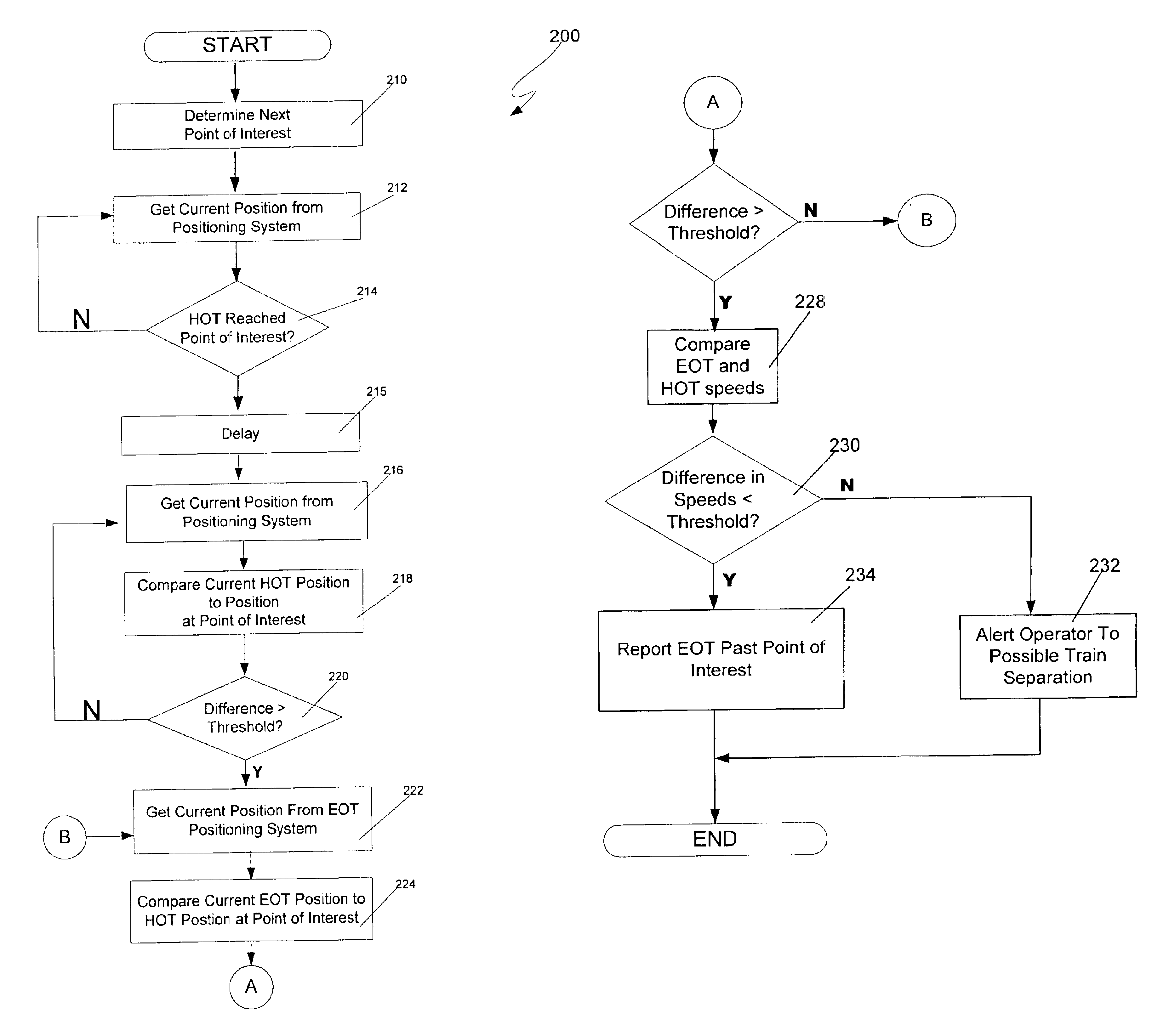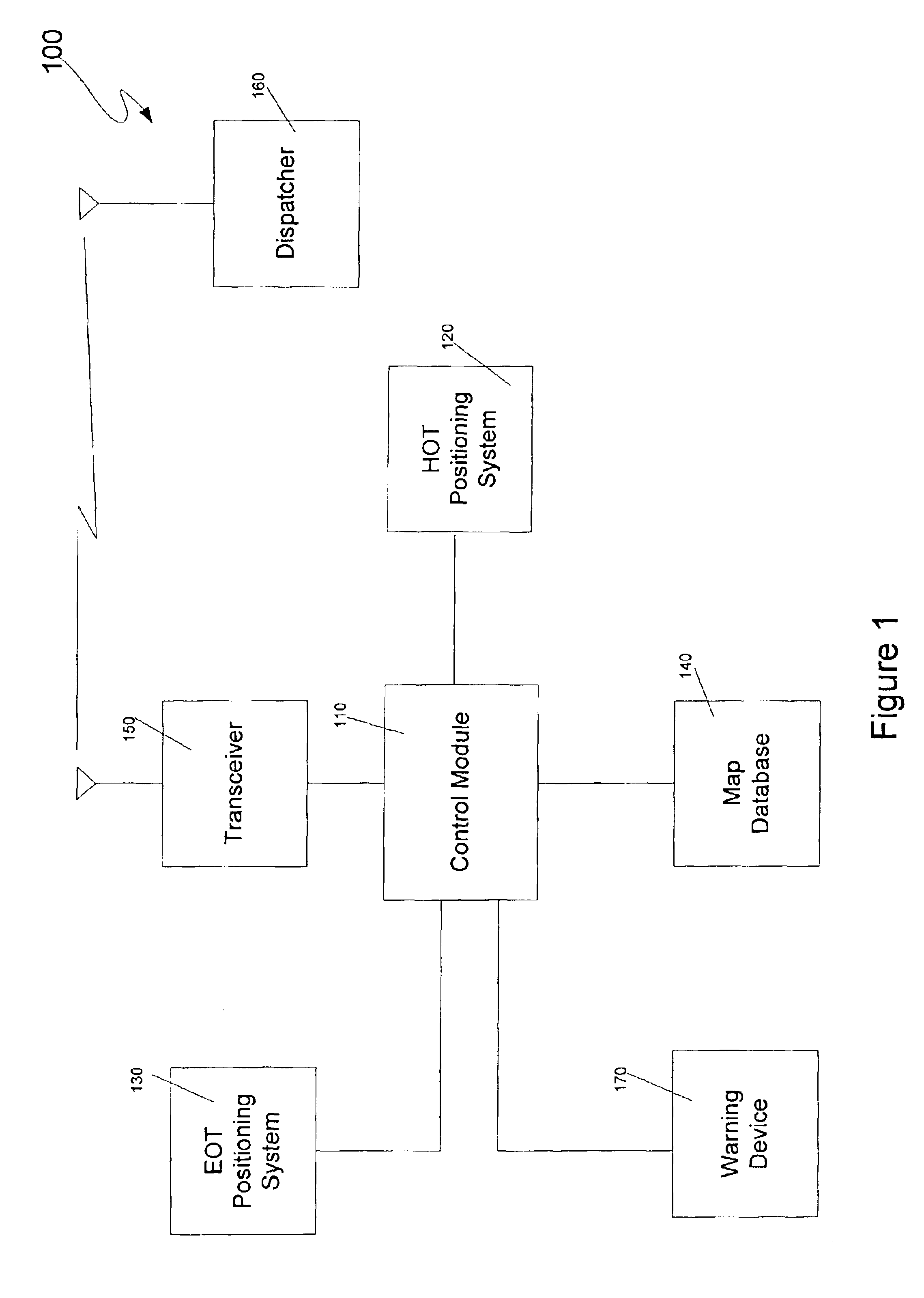Method and system for detecting when an end of train has passed a point
a technology of detecting and passing a point, applied in the field of railways, can solve the problems of difficult or impossible visual determination of the end of a train passing a point, collision between two trains, and modern trains can be hundreds of yards long,
- Summary
- Abstract
- Description
- Claims
- Application Information
AI Technical Summary
Benefits of technology
Problems solved by technology
Method used
Image
Examples
second embodiment
[0029]FIG. 3 is a flowchart of the operation of the control module 110 according to the invention. The method illustrated in FIG. 3 is similar to the method illustrated in FIG. 2, but differs in the way in which the control module 110 determines that the head-of-train has traveled a distance equal to the length of the train. The step in the method of FIG. 2 can be peformed by successively querying the GPS system to determine the distance between the point of interest and the current head-of-train location. The distance may be determined by simply calculating a linear distance, but doing so can be disadvantageous in that, for curved sections of track, the linear distance will be shorter than the true “track distance” (i.e., the distance that the train has traveled over the track), which will result in an unnecessary delay in determining that the HOT has traveled a distance equal to the length of the train. This step may also be performed using track information stored in the map data...
third embodiment
[0031]FIG. 4 is a flowchart 400 illustrating the operation of the control module 110 according to the invention. The control module 110 determines the location of the next point of interest at step 402. As discussed above, the next point of interest may be determined in any number of ways including, for example, using information from the map database 140, or it may be obtained from a dispatcher (e.g., in a warrant / authority). The control module 110 then obtains the train's current position from information provided by the HOT positioning system 120 at step 404. If the current train position as reported by the HOT positioning system 120 indicates that the HOT has not yet reached the point of interest at step 406, step 404 is repeated.
[0032]When the HOT has reached the point of interest at step 406, the control module 110 then obtains the current EOT position from the EOT positioning system 130 and temporarily stores it at step 408. The control module 110 then delays a short period (...
PUM
 Login to View More
Login to View More Abstract
Description
Claims
Application Information
 Login to View More
Login to View More - R&D
- Intellectual Property
- Life Sciences
- Materials
- Tech Scout
- Unparalleled Data Quality
- Higher Quality Content
- 60% Fewer Hallucinations
Browse by: Latest US Patents, China's latest patents, Technical Efficacy Thesaurus, Application Domain, Technology Topic, Popular Technical Reports.
© 2025 PatSnap. All rights reserved.Legal|Privacy policy|Modern Slavery Act Transparency Statement|Sitemap|About US| Contact US: help@patsnap.com



